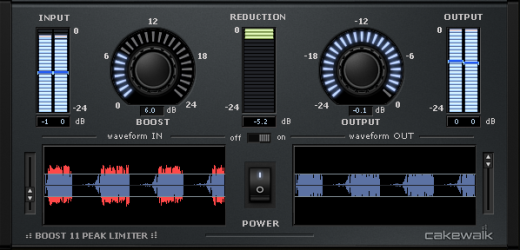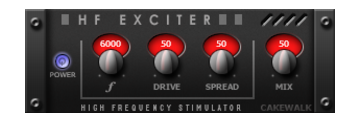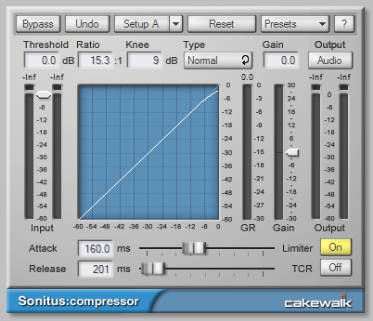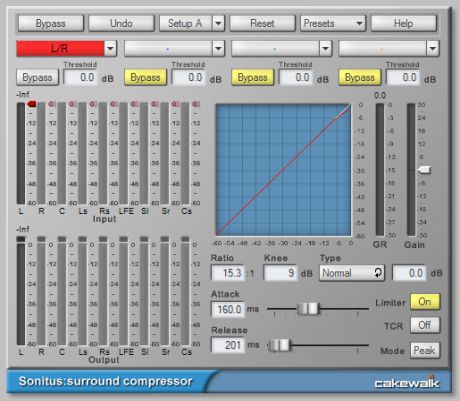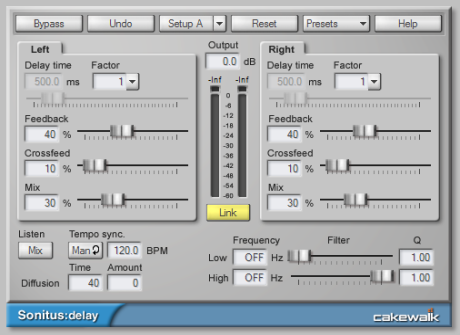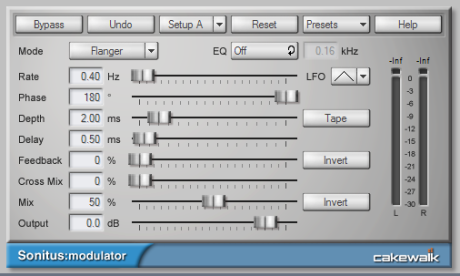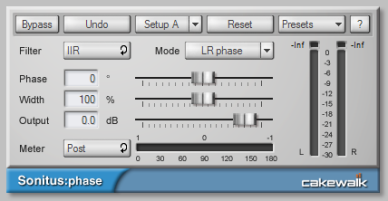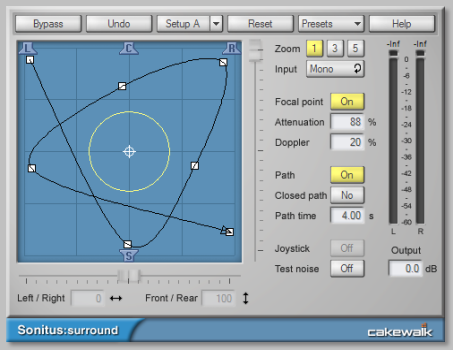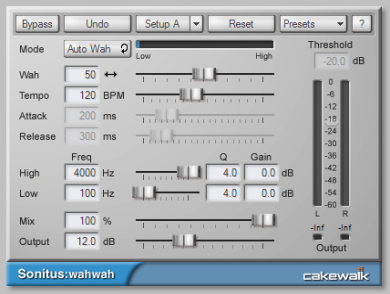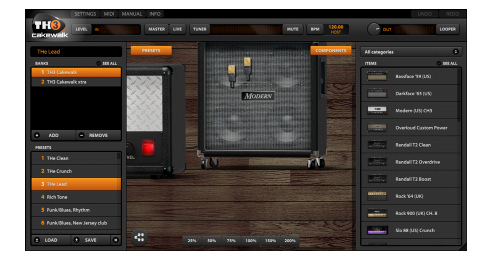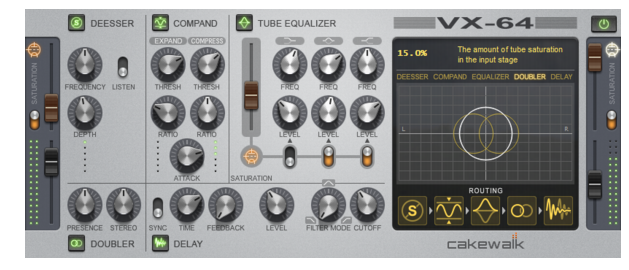Figure 549. Alias Factor.Alias Factor combines bit crushing and low pass filtering in a unique way, allowing you to decimate your audio to create tones as varied as vintage samplers, cell phones, or old video games. Decimator effects are nothing new, but Alias Factor generates this effect using a special technique that generates aliasing without the unwanted harsh effects provided by other options, offering sounds that are grainy in a “smooth” and organic way. Alias Factor also allows for further creation of attention grabbing new timbres by linking a low pass resonant filter to the decimator for a new means of tweaking your sound.For more information, see the Alias Factor online Help.Figure 550. Boost 11 Peak Limiter.The Boost 11 Peak Limiter is a transparent peak limiting and volume maximizing plug-in for mixing and mastering purposes; it is designed to reduce peak levels without coloring the sound. Boost 11 uses a “look-ahead” limiter algorithm to prevent output clipping and PDR (Program Dependent Release) to minimize pumping (audible fluctuations of the volume) and maximize the loudness. “Look-ahead” means the limiter analyzes the audio input ahead of time by delaying the output for approximately 1.5 ms. Boost 11 supports sampling rates up to 192 kHz, mono and stereo operation, and double precision processing.For more information, see the Boost 11 Peak Limiter online Help.Figure 551. BREVERB 2 Cakewalk.Figure 552. Channel Tools.The Channel Tools plug-in provides easy and powerful channel processing for gain, Mid-Side decoding, delay and stereo panning. Channel Tools is ideal for enhancing and adjusting stereo separation for stereo tracks and full mixes.With Channel Tools you can:For more information, see the Channel Tools online Help.Figure 553. Classic Phaser.For more information, see the Classic Phaser online Help.Figure 554. Stereo Compressor/Gate.Stereo Compressor/Gate combines a compressor and a gate into a single effect, so you can increase the overall dynamic level of an audio signal, without distorting the loud parts, and without excessively boosting low-level noise. You can manually trigger the gate via MIDI, which makes it simple to produce stuttering effects.For more information, see the Stereo Compressor/Gate online Help.Figure 555. HF Exciter.HF Exciter lets you enhance the higher end of the frequency spectrum. This produces the psycho-acoustic affect that the signal is brighter and clearer. This is done by adding harmonic content that is not present in the original signal.For more information, see the HF Exciter online Help.Figure 556. Mod Filter.Mod Filter produces a dynamic filtering effect, in that the actual filter can respond to incoming signal or follow the cycle of a tempo-synchronized LFO. The filter itself is a low-pass filter type, which filters out higher frequencies.For more information, see the Mod Filter online Help.Figure 557. Multivoice Chorus/Flanger.Chorus/Flanger lets you add depth and thickness to the signal. The EQ section in the feedback path allows you to create some truly unique sounds.For more information, see the Multivoice Chorus/Flanger online Help.Figure 558. Para-Q.Para-Q is a two-band true parametric EQ that can be used to boost or attenuate generally high or low bands of the signal. It consumes very little processing power, which allows you to use it on many tracks simultaneously.For more information, see the Para-Q online Help.Figure 559. ProChannel.Figure 560. Sonitus fx: Compressor.For more information, see the Sonitus fx: Compressor online Help.Figure 561. Sonitus fx: Surround Compressor.For more information, see the Sonitus fx: Surround Compressor online Help.Figure 562. Sonitus fx: Delay.For more information, see the Sonitus fx: Delay online Help.Figure 563. Sonitus fx: EQ.For more information, see the Sonitus fx: EQ online Help.Figure 564. Sonitus fx: Gate.For more information, see the Sonitus fx: Gate online Help.Figure 565. Sonitus fx: Modulator.For more information, see the Sonitus fx: Modulator online Help.Figure 566. Sonitus fx: Multiband.For more information, see the Sonitus fx: Multiband online Help.Figure 567. Sonitus fx: Phase.
Tip - Searching Documentation
Tip: To search for a specific topic, type your search query in the Search Cakewalk.com field at the top right of this page.
When the search results appear, click which product's documentation you would like to search to filter the search results further.
Note - Using Offline Help
Note: If you prefer to always use offline Help, go to Edit > Preferences > File > Advanced in your Cakewalk software and select Always Use Offline Help.
If you are not connected to the internet, your Cakewalk software will default to showing offline help until an internet connection becomes available.





